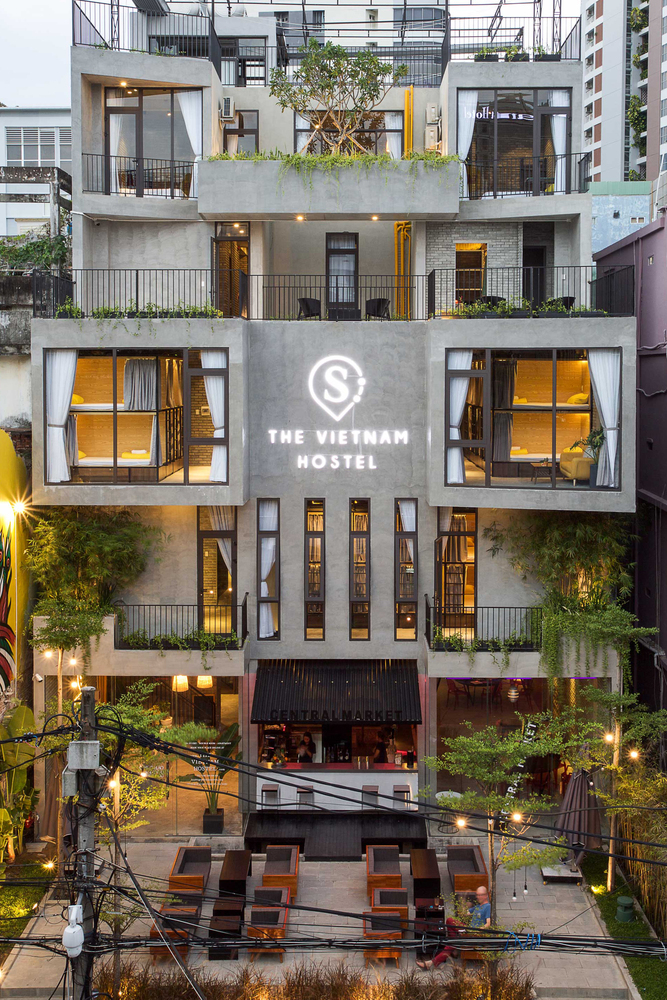Sessa Residence J,PA
2013-05-08 01:00
架构师提供的文本描述。客户接触J,P:A的程序,其中包括增加另一间卧室套房,认为它可能被放在现有的结构之上。J,P:一个反对的,典型的野心,做一些比客户要求更多的程序,一个外星宝石,比原来的。相反,认识到潜伏在一个现有的50年随意变化和积累的汞合金中是一个更完美的数字,如果再加上更多的东西,这个数字就会被毁,J,P:a建议少做一些。
Text description provided by the architects. The clients approached J,P:A with a program that included the addition of another bedroom suite, thinking that it might be placed on top of the existing structure. J,P:A demurred, resisting the typical ambition to make something more of the program than the client requested, an alien gem to outshine the original. Instead, recognizing that lurking within an existing amalgam of fifty years of casual changes and accretions was a more perfect figure that would be ruined if yet something more were added on, J,P:A suggested making less.
部分设计和部分考古学,本项目是一个积极的约束美德的展示。复合设计过程遵循米开朗基罗的雕塑实践,“移除一切不是它的东西”,然后添加一切必要的东西,使它成为最好的版本本身。在这种情况下,“它”是一个标志性的“管”党,隐藏在一个不起眼的承包商设计的盒子上高跷。
Part design and part archeology, this project is a demonstration of the positive virtue of restraint. The composite design process followed Michelangelo’s sculptural practice of “removing everything that was not it” and then adding in all that was necessary to make it be the best possible version of itself. In this case “it” was an iconic “tube” partis, hiding within an unremarkable contractor-designed box-on-stilts.
J,P:一个认识到,现有的房子代表了一个世纪中期的钻石在毛坯:一个罕见的“管”方案,先驱流行的当代“连续表面”项目类型。作为“连续表面”理念的第一次表达,管子体现了一个鲜明的现代主义版本的“儿童画房子”,用生活机器的拓扑/高斯清晰取代了古典原作的修辞元素。在居住问题的这种理想化的升华中,信封主要被看作是内外分离,而不是从上往下躲。在这里,塞萨住宅实现了这一理想的理想化-因为它被悬挂在空中,因此没有任何与地球的联系,管状表达找到了它的典范,所有方面都是平等的:地面和屋顶、土地和天空之间没有区别。开放的两端,它重申了最原始的方向之间的联系,内外-洞穴口俯瞰大草原。
J,P:A recognized that the existing house represented a mid-century diamond in the rough: a rare “tube” scheme, precursor to the popular contemporary “continuous surface” project type. As the first expression of the tectonic imperatives of the “continuous surface” idea, the tube embodies a distinctly modernist version of the “child’s drawing of the house,” replacing the rhetorical elements of the classical original with the topological/gaussian clarity of the machine for living. In this idealized distillation of the problem of dwelling, the envelope is seen as primarily separating inside from outside, rather than sheltering down from up. Here the Sessa Residence achieves the idealization of that ideal—since it is held up in the air and thus free of any association with the earth, the tube expression finds its apotheosis, with all sides equal: no difference between the ground plane and the roof, between the land and the sky. Open on the ends, it reasserts the most primal orientation to the connection between inside and outside—that of the cave mouth overlooking the savannah.
然而,在这个版本的派对中,两个开放部分之间存在明显的南加州差异:一个回望山坡,打开一个有阴影的室外露台-洞穴-它把自由流动的室内空间吸引到温暖的加州气候中,而另一端则观察到尼科尔斯峡谷广阔的开阔景色和市中心的灯光-稀树草原以外的地方。因此,室内本身就有不同的方向:从封闭的后露台区到房子,再到峡谷外的城市远处的灯光,或直接邻近的室外的气氛,当大滑动玻璃门关闭时,视觉上呈现出来,当它们打开时,实际上是在那里。
In this version of the partis, though, a distinctly Southern California difference is registered between the two open ends: one looks back to the hillside, opening onto a shaded outdoor patio—the cave—that draws the free flowing interior spaces out to the balmy California climate, while the other end surveys the wide open vistas of Nichols Canyon and lights of downtown—the savannah beyond. Thus the interior itself is variously oriented: to a through-view experience, from the enclosed back patio areas, through the house and on to the distant lights of the city out beyond the canyon, or to the mood of the directly adjacent outdoors, visually present when the large sliding glass doors are closed, and actually there when they are opened.
J,P:有人建议,不应该在这个时候增加新的空间,而应该把精力集中在完善现有的结构上,通过揭示逻辑的隐藏线并帮助他们实现,从而使其在自己的术语中更加完美。因此,多余的隔间和壁炉被从管子的内壁上刮下来,打开端的穿孔窗户被替换成全墙的滑动玻璃门,一个新时期的厨房被安装,屋顶和结构被更换,这次没有掉下来的松软。最后,设计了一个新的进入法庭,允许空间畅通无阻地通过管道流向外面和更远的地方,同时保护隐私-在玻璃房子里生活时总是很重要的!其结果是典型的案例研究传统和加州的室内/室外生活方式,一个完美的框架,客户认真收集战后家具和艺术。原本计划增加的卧室将在稍后阶段处理,隐藏在一个未来的车库发展到一边,它不会损害修复的管道。这里所示的项目描绘了这些管道的完美,在新的卧室套房和车库之前。
J,P:A proposed that instead of adding new space at this time, the effort should be focused on refining the existing structure, to make it more perfect in its own terms by revealing the hidden lines of that logic and helping them to their own fulfillment. So, excess partitions and a fireplace were scraped off the interior walls of the tube, punched windows in the open ends were replaced with full walls of sliding glass doors, a new period kitchen was installed and the roof and structure were replaced, this time free of dropped soffits. Finally, a new entry court was designed to allow the space to flow unimpeded through the tube to the outside and beyond while preserving privacy—always important when living in a glass house! The result is exemplary of the Case Study tradition and California lifestyle of indoor/outdoor living, a perfect frame for the client’s serious collection of postwar furniture and art. The originally-planned bedroom addition will be dealt with in a later phase, tucked beneath a future carport developed off to the side where it would not compromise the rehabilitated tube. The project as shown here depicts the perfection of those tube lines, prior to the addition of the new bedroom suite and carport.
Location Los Angeles, United States
Architect in Charge Jones, Partners: Architecture
Design Team Wes Jones, Rachel Bitan, Matt Daines, Janiva Henry, Steven Purvis
Photographs Taiyo Watanabe
 举报
举报
别默默的看了,快登录帮我评论一下吧!:)
注册
登录
更多评论
相关文章
-

描边风设计中,最容易犯的8种问题分析
2018年走过了四分之一,LOGO设计趋势也清晰了LOGO设计
-

描边风设计中,最容易犯的8种问题分析
2018年走过了四分之一,LOGO设计趋势也清晰了LOGO设计
-

描边风设计中,最容易犯的8种问题分析
2018年走过了四分之一,LOGO设计趋势也清晰了LOGO设计












































































